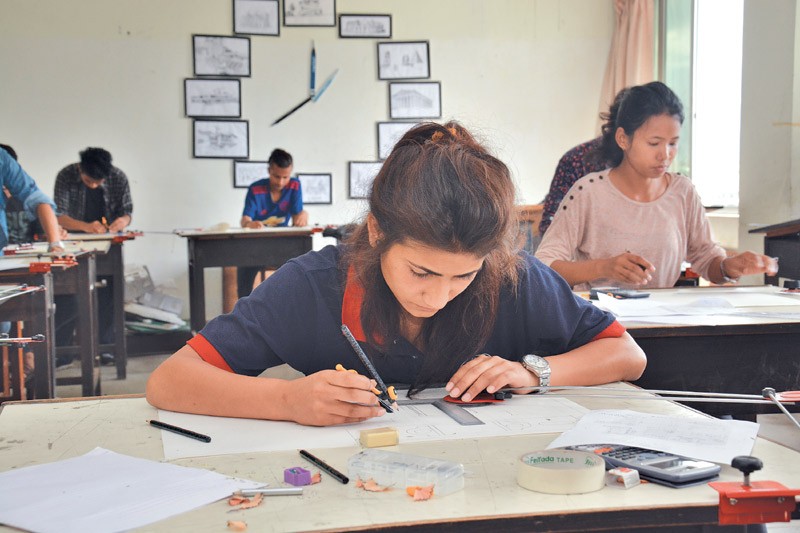September 22, 2016: Engineering has been a popular subject with Nepali students ever since it was introduced as a distinct area of study in the 1930s. Until 1970s, Pulchowk Engineering Campus and Thapathali Engineering Campus, which are affiliated to the Institute of Engineering under the Tribhuvan University, were the two colleges offering engineering courses. Today, more than 42 engineering colleges affiliated to four different universities—Tribhuvan University, Kathmandu University, Pokhara University and Purbanchal University—offer various specialised courses. Nepal produces an estimated 1000 engineers every year.
Given its diverse scope and range of specialisations, engineering education is likely to appeal to an even bigger number of students in the future. Other factors, including ample job opportunities, a competitive pay scale and social prestige have been steadily drawing a large numbers of students seeking a career in engineering.
“I chose engineering because I am passionate about it. I think engineering has great career prospects in the country,†said Rabi Kiran Ghimire, who recently enrolled at the Himalayan Engineering College. Ghimire is studying to become a computer engineer.
Like Ghimire, more than 8,000 high school graduates are expected to enrol in engineering college this year. An equal number of students are expected to go to India and other countries to pursue further studies in the subject. ‘’There’s huge scope in the engineering field. Even an average student can get job anywhere in the world, “said Hirendra Man Pradhan, Chairman of Kathmandu Engineering College. Stakeholders believe that given the popularity of the subject among students and its relative affordability in the country, engineering is one of the leading fields of study in the country. According to colleges, students pay up to Rs 800,000 for a four-year Bachelor in Engineering course. Those studying under different quotas and scholarships pay as less as Rs 300,000 for the programme. Currently there are around 17,000 engineers registered with the Nepal Engineering Association (NEA)—a majority of them civil, architectural, mechanical and computer engineers. Experts opine that despite the bourgeoning number of engineering students in the country, the country still has a shortfall of engineers and that its demand is only bound to increase in the future. NEA official estimate that because of the shortfall in the workforce, Nepal is attracting many migrant engineers who fill the void. Nepal will require 70,000 engineers—mainly civil, architectural and structural engineers—to complete its post-earthquake reconstruction. An estimated 5,000 Nepali engineers are working in the Gulf and beyond. Despite the increase in number of engineering college and the ample job opportunities in the market, critics argue that Nepal’s engineering sector still lags behind when compared to other developed nations. They suggest that because modern engineering education has surpassed traditional boundaries by offering solution to every kind of day-to-day problems, engineering colleges in Nepal need to fully explore a multi-sectoral and diverse field such as engineering in order to create more highly-specialised engineers and to stop the influx of students leaving for countries like India, the US, the Uk, Australia, Germany and Norway to pursue engineering.
Pradhan, whose college has produced over 4,000 graduates since its inception, acknowledges the failure of Nepali colleges in producing job creators. He says that currently the engineering education in the country is geared towards producing jobseekers as opposed to job creators, and that if the model is flipped, there is no bounds to what the scope of engineering could be. Rameshwor Rijal, Principal at Kantipur Engineering College, believes that if the right changes are made, the engineering sector could not only drive the country’s industrial and infrastructural development forward, but could also hearken progress in fields of technological advancement and research. “There is bound to be an increase in the demand for engineers in the future. Engineering education, in its current state, might have its shortfalls, but it still is one of the brightest career prospects in the country, and represents one of the leading option for students,†he said.







